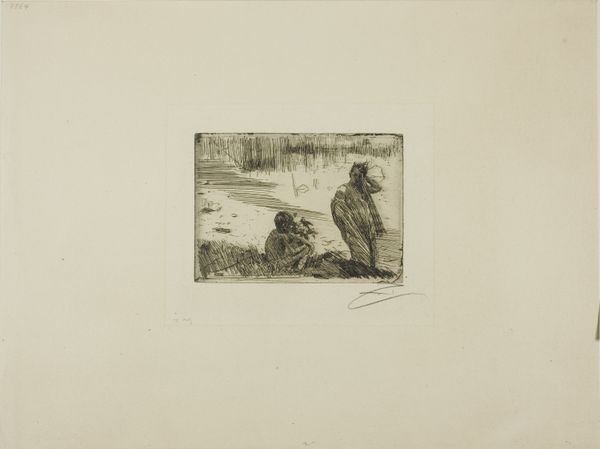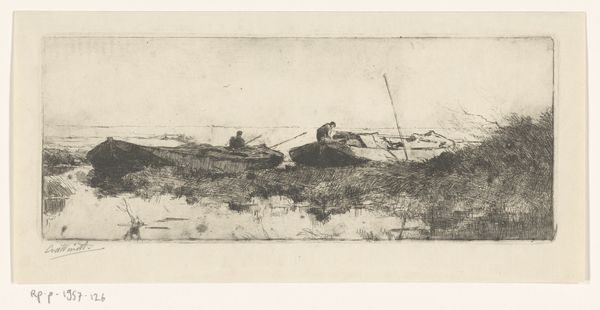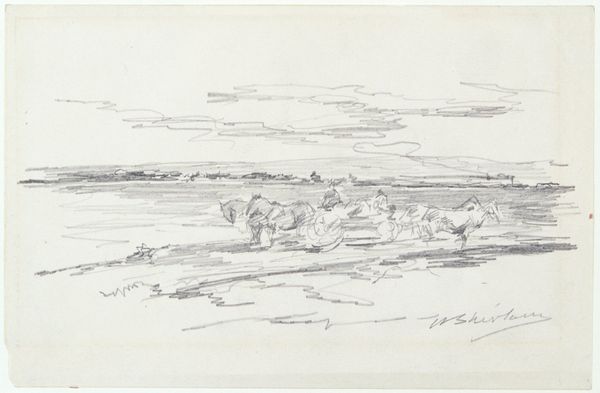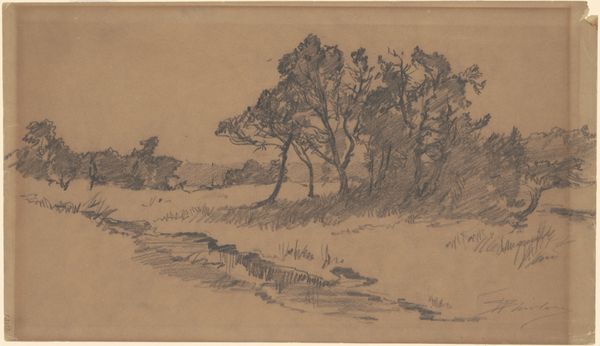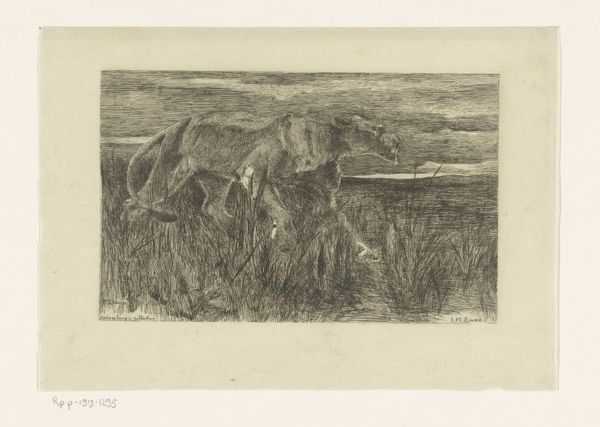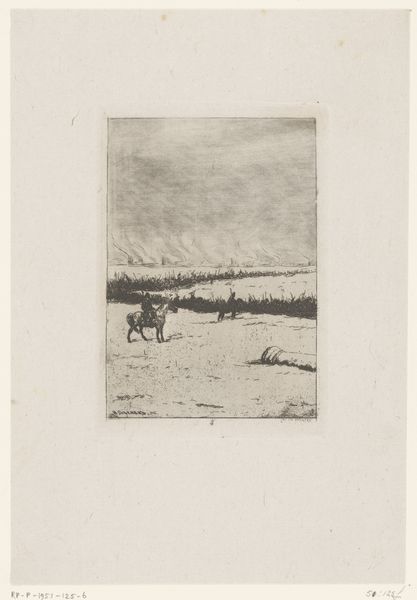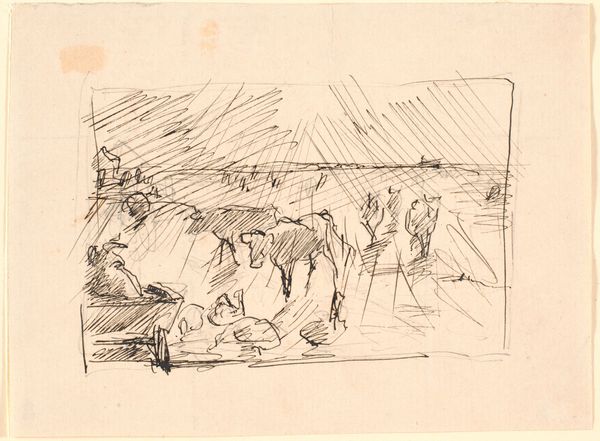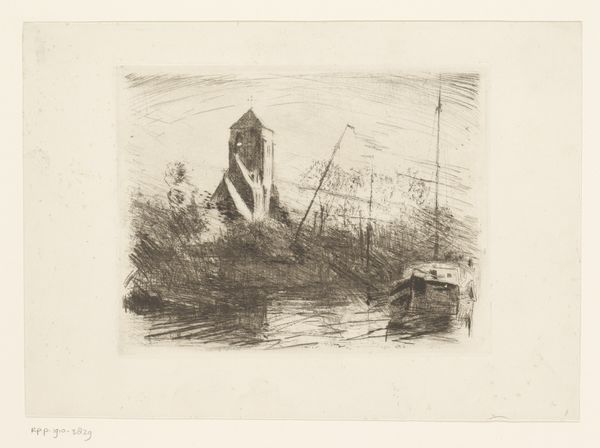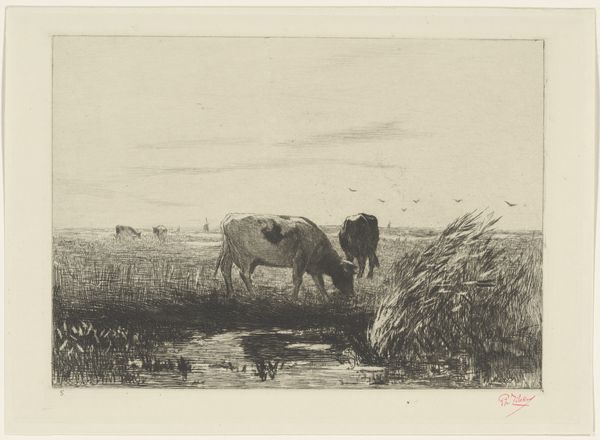
drawing, print, ink, pencil
#
drawing
#
narrative-art
# print
#
pencil sketch
#
landscape
#
figuration
#
ink
#
pencil
#
line
#
pencil work
Dimensions: 190 mm (height) x 230 mm (width) (bladmaal)
Curator: This drawing by Oscar Andersen is an illustration for "Jeppe paa Bjerget," dating from between 1848 and 1907. It's rendered in pencil and ink. The original is held at the SMK, the National Gallery of Denmark. Editor: The scene has an almost dreamlike quality to it. The figures emerge from a wispy, tall-grassed landscape, almost like they're materializing from the subconscious. Curator: It’s a study of a pivotal scene, drawing on Ludvig Holberg's famous play, a cornerstone of Danish theatre and social critique. Note how Andersen captures the protagonist Jeppe's disoriented state. He is a peasant, tricked into believing he’s a nobleman, the victim of a cruel joke perpetrated by the baron. Editor: Exactly! The Baron and his cronies surround him, as Jeppe stumbles out with his arms wide open, as if expecting a warm welcome; in reality he will soon return to the muck and mire whence he came. Look how the symbols of aristocracy clash with the simple setting. Curator: Absolutely. Andersen is critiquing power structures and the arbitrary nature of social status. The very act of placing a peasant in noble attire underscores the absurdity of inherent privilege. And Andersen was invested in highlighting these themes. This era in Denmark was marked by significant social and political change, particularly debates surrounding class and societal structures. Editor: And note the recurring symbol of the open field – a wild landscape can be read as a metaphor for untamed desires and freedom beyond social codes, as an emotional terrain. The horizon almost dissolves – is there a town there, a castle? – blending reality with imagination. Curator: It does raise a question about the institutions of power – are they firmly in place, or are they subject to the same "dream" that afflicts Jeppe? Andersen is using visual language to express these doubts about societal hierarchies during his time. Editor: So it becomes less about one specific moment in the narrative and more about the symbolic weight carried by its protagonist within the social hierarchy of its time. Curator: Precisely. This small illustration resonates far beyond its immediate depiction of a theatrical scene, reflecting broader societal tensions. Editor: Seeing this artwork provides an emotional connection with a play that still reverberates today.
Comments
No comments
Be the first to comment and join the conversation on the ultimate creative platform.
